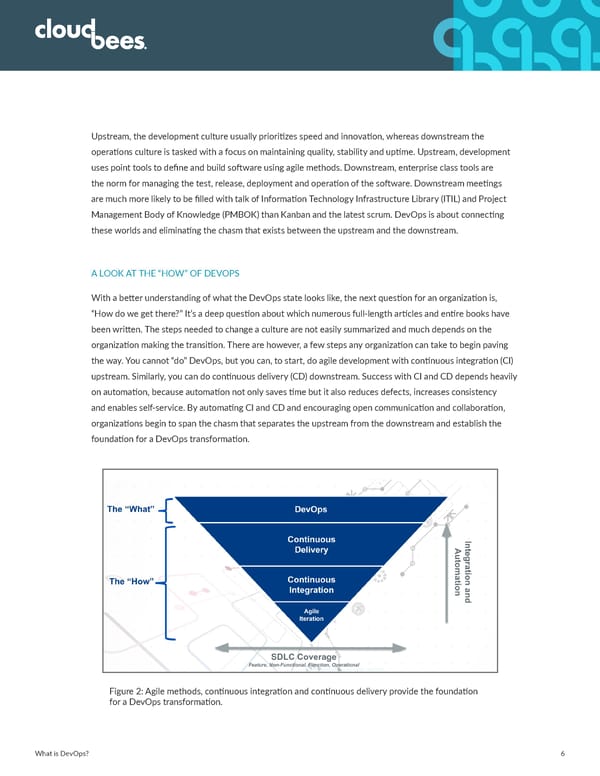Upstream, the development culture usually prioritizes speed and innovation, whereas downstream the operations culture is tasked with a focus on maintaining quality, stability and uptime. Upstream, development uses point tools to define and build software using agile methods. Downstream, enterprise class tools are the norm for managing the test, release, deployment and operation of the software. Downstream meetings are much more likely to be filled with talk of Information Technology Infrastructure Library (ITIL) and Project Management Body of Knowledge (PMBOK) than Kanban and the latest scrum. DevOps is about connecting these worlds and eliminating the chasm that exists between the upstream and the downstream. A LOOK AT THE “HOW” OF DEVOPS With a better understanding of what the DevOps state looks like, the next question for an organization is, “How do we get there?” It’s a deep question about which numerous full-length articles and entire books have been written. The steps needed to change a culture are not easily summarized and much depends on the organization making the transition. There are however, a few steps any organization can take to begin paving the way. You cannot “do” DevOps, but you can, to start, do agile development with continuous integration (CI) upstream. Similarly, you can do continuous delivery (CD) downstream. Success with CI and CD depends heavily on automation, because automation not only saves time but it also reduces defects, increases consistency and enables self-service. By automating CI and CD and encouraging open communication and collaboration, organizations begin to span the chasm that separates the upstream from the downstream and establish the foundation for a DevOps transformation. Figure 2: Agile methods, continuous integration and continuous delivery provide the foundation for a DevOps transformation. What is DevOps? 6
 What is DevOps ? Page 6 Page 8
What is DevOps ? Page 6 Page 8